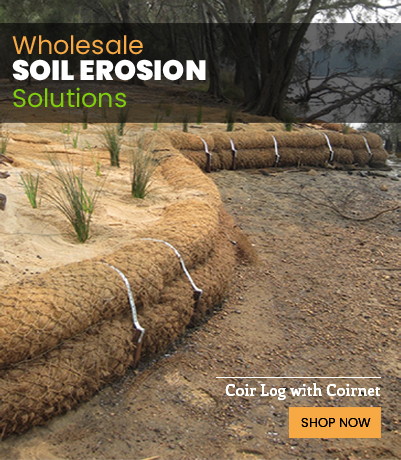Filter fabrics, also known as geotextiles, are a type of fabric used to help prevent soil erosion and encourage plant growth. While many water filter fabrics are made out of synthetic materials, coir geotextiles have been rising in popularity.
Coir is a fiber extracted from the husk of a coconut shell. It’s tough, bacteria- and fungus-resistant, and biodegradable, making it a perfect material to use in gardening and erosion control applications. As it can be woven into a variety of different thicknesses and strengths, coir filter fabrics are easily customizable to your specific erosion control needs.
Benefits of Filter Fabrics
Land erosion is an international issue, impacting everyone from farmers to homeowners to businesses. With both significant droughts and major flooding causing erosion, it’s more important than ever to be prepared to protect your land.
Filter fabrics allow water to pass through while preventing sediment from flowing downhill or leeching into the water. By preventing dirt, stones, and other deposits from shifting, filter fabrics provide a stable area for plant life to germinate and grow. As plant life takes root, your need for filter fabrics will lessen; plants will provide natural erosion control.
Woven vs. Non-Woven Filter Fabrics
When choosing your filter fabric, it’s essential to select the fabric that would work best for your specific needs. Coir filter fabrics, for example, come in both non-woven mats and woven netting.
Different types of sediment call for different types of filter fabrics. Woven netting is best if you’re dealing with fine sediments, such as sand, or if you need something that can provide a lot of stability. Woven mesh is also great for suppressing weed growth in gardens.
Non-woven mats have a much higher flow-through rate but may allow small sediments to pass through. However, if you’re only dealing with larger sediment and have high water flow, a non-woven coir mat is likely your best option. Non-woven filter fabrics are also great for wrapping pipes or lining trench-style drains.
Using Coir as a Filter Fabric
It can be challenging to decide between synthetic filter fabrics and natural filter fabrics, especially as there’s more information about synthetic fabrics on the market. However, we strongly recommend using biodegradable materials like coir for many reasons:
- Highly resistant to bacteria and fungus.
- Not harmful to wildlife or domesticated animals.
- Sustainable and natural.
- Eco-friendly and requires little to no cleanup – will naturally decompose.
- Available in a variety of strengths.
Coir filter fabrics have many benefits over more traditional filter fabrics, and may also be more cost-effective, depending on your needs. They can help filter water while preventing the displacement of dirt, seeds, and other vital parts of your landscape, and work equally well on slopes or flat lands such as gardens or drains. Whether you want to provide additional protection for a construction project or are trying to prevent further erosion issues on your property, coir filter fabrics are an excellent place to start.

Leave a Reply